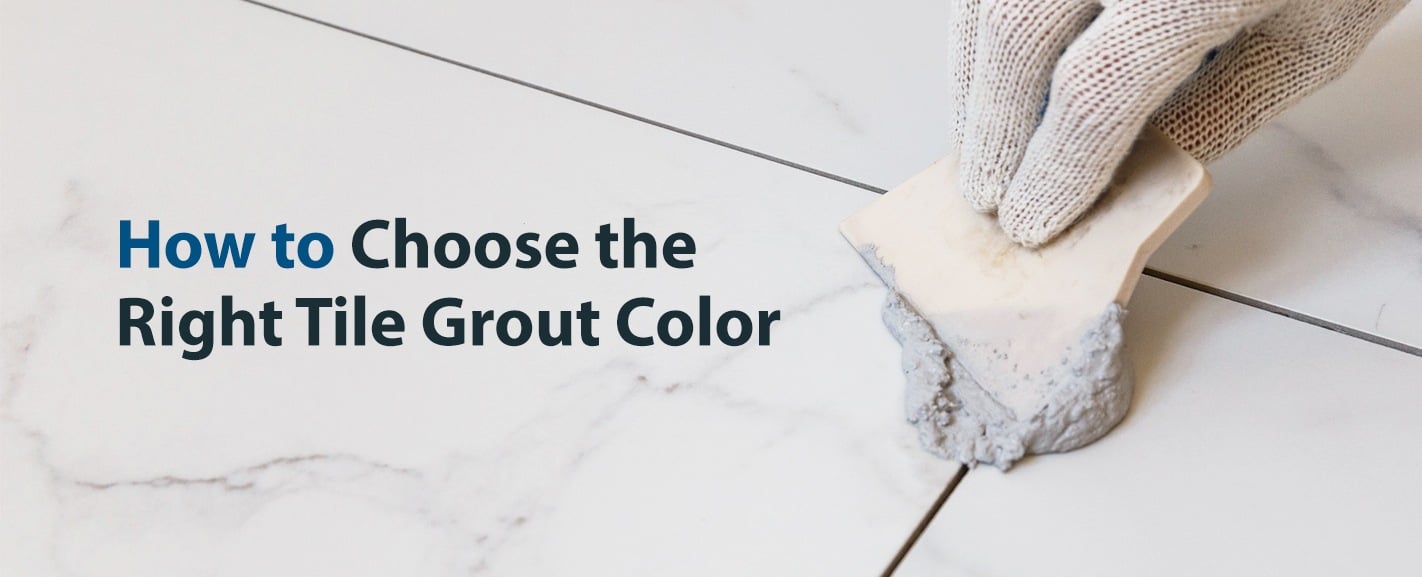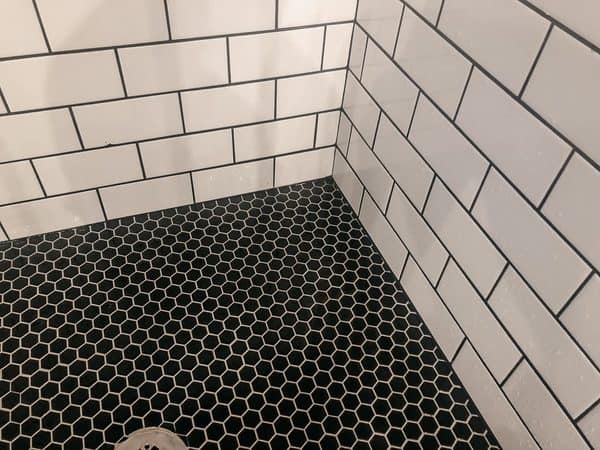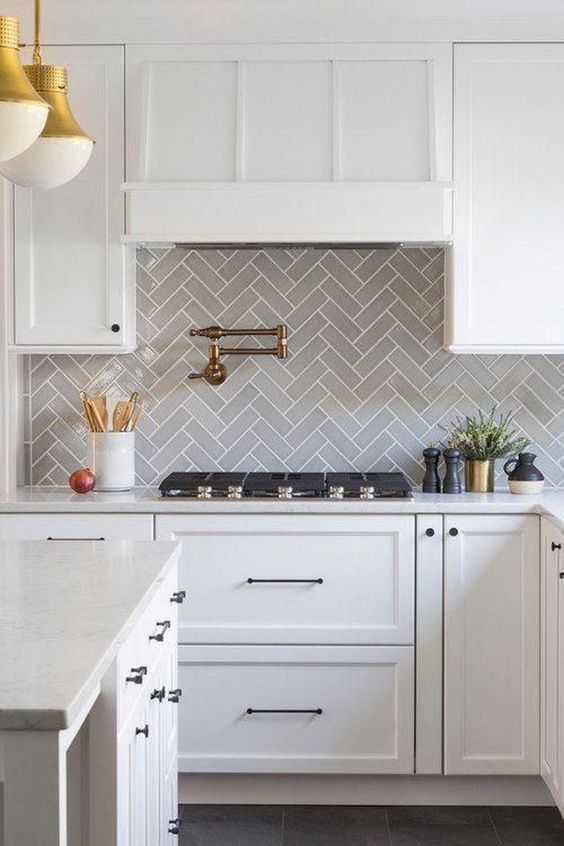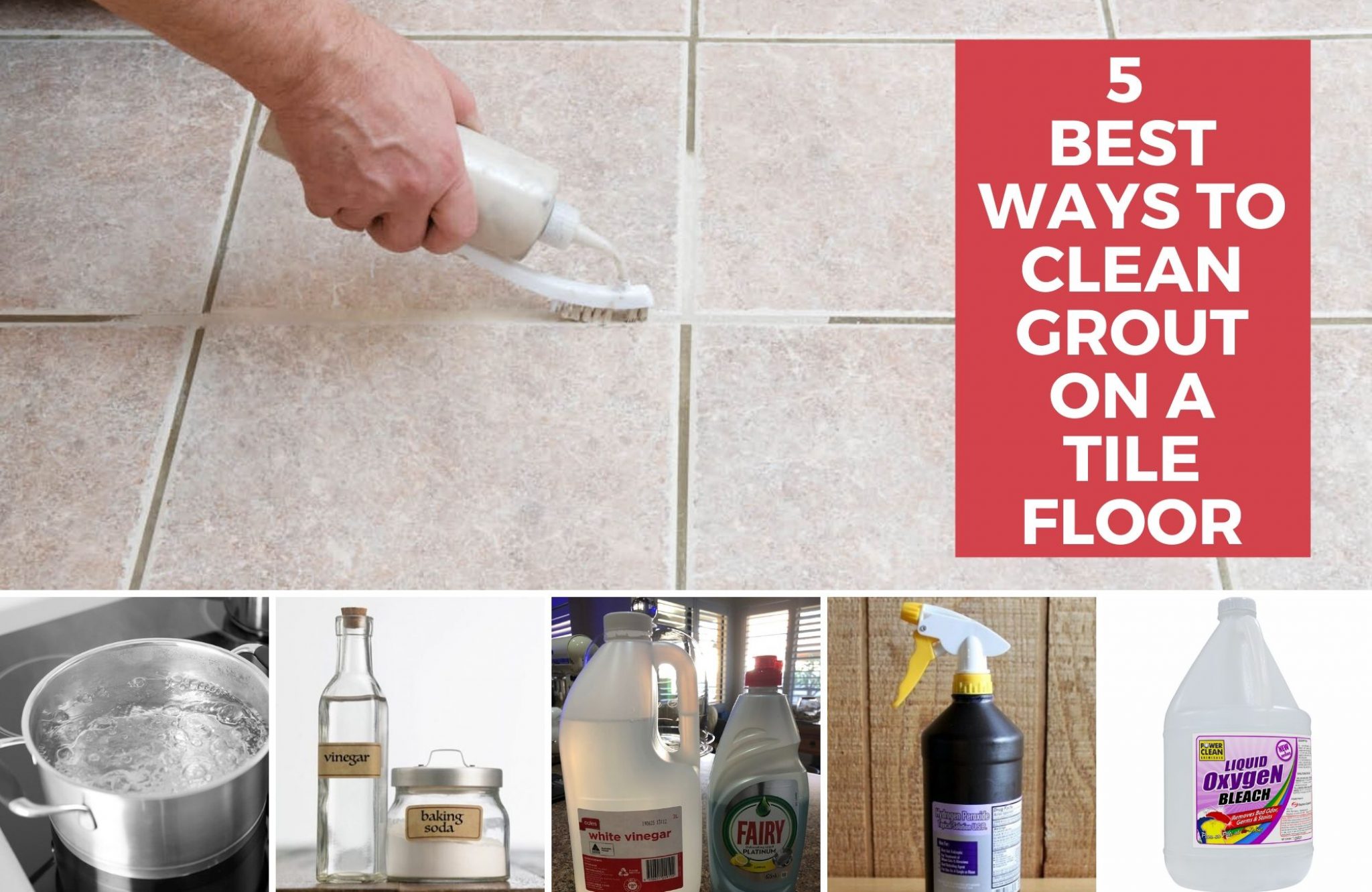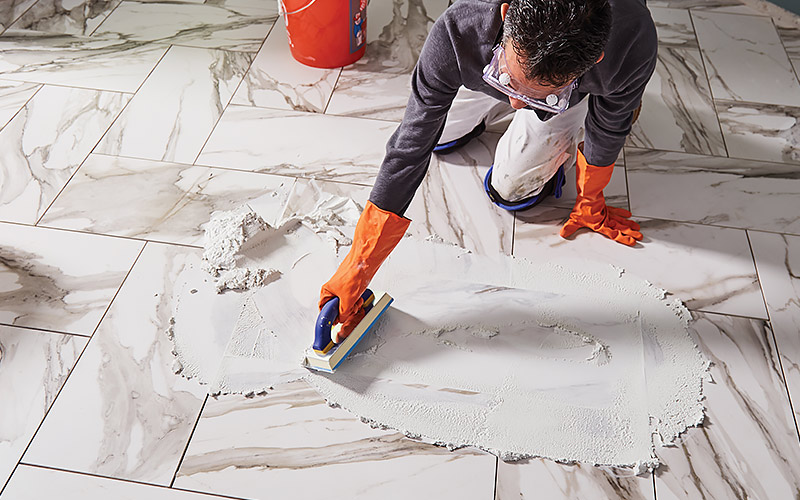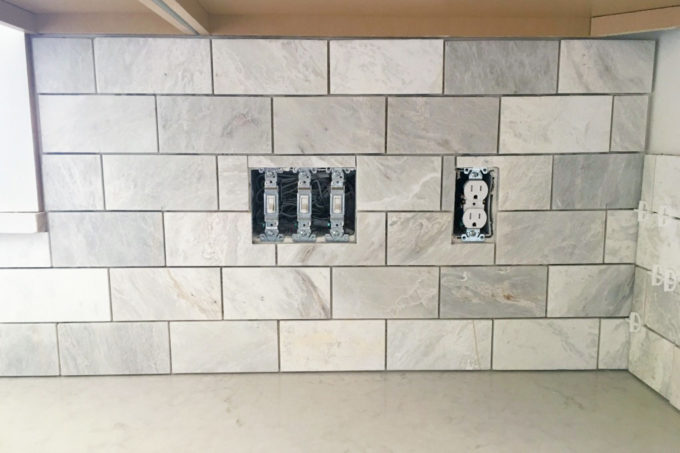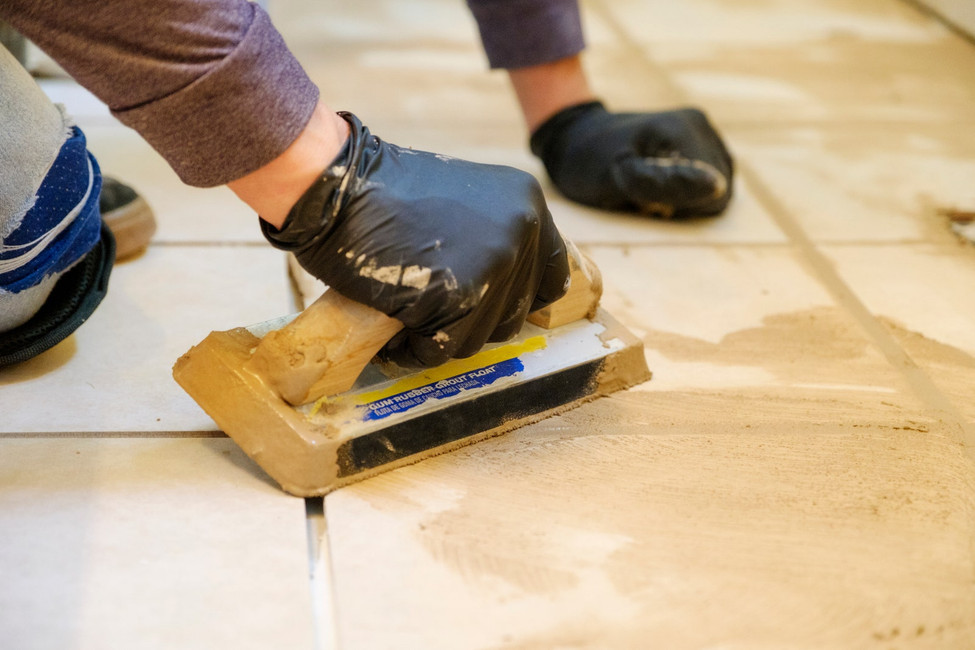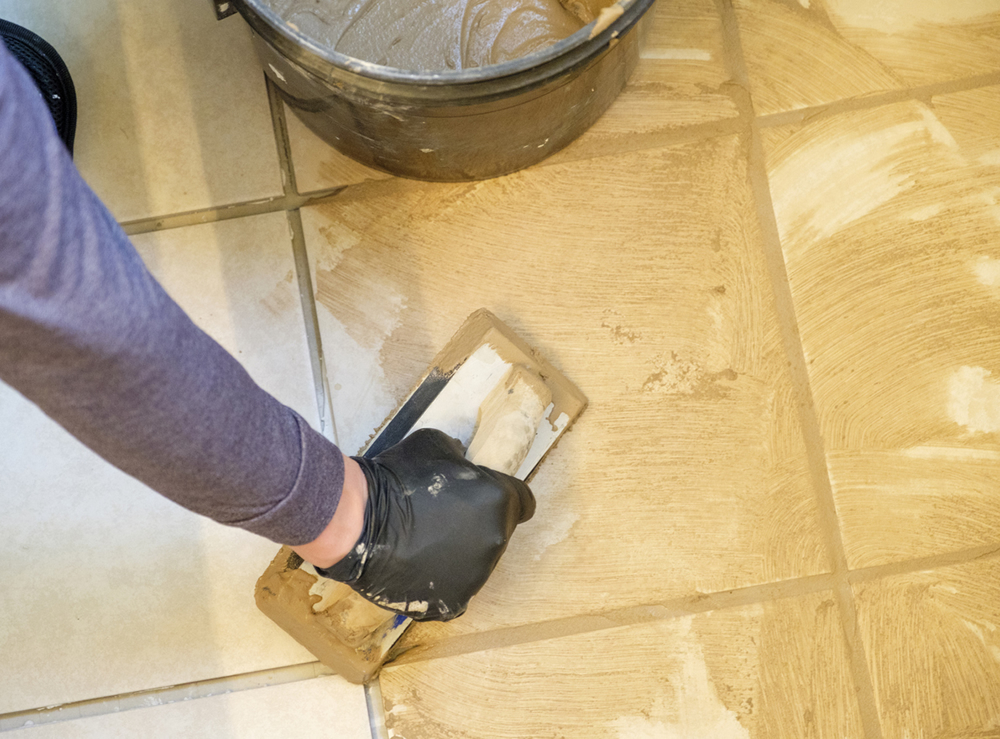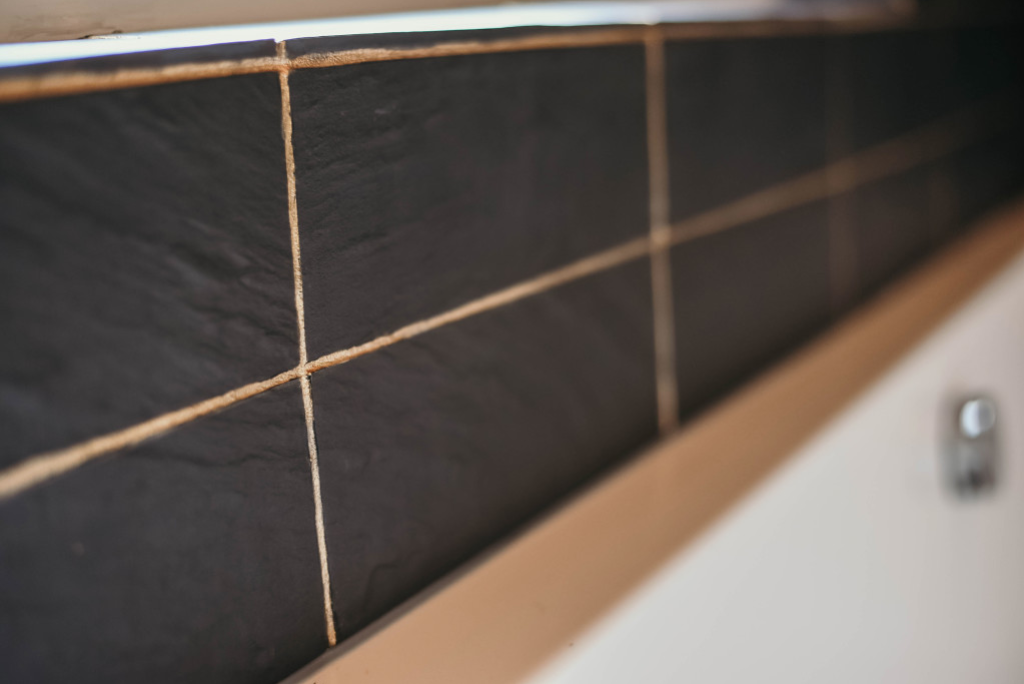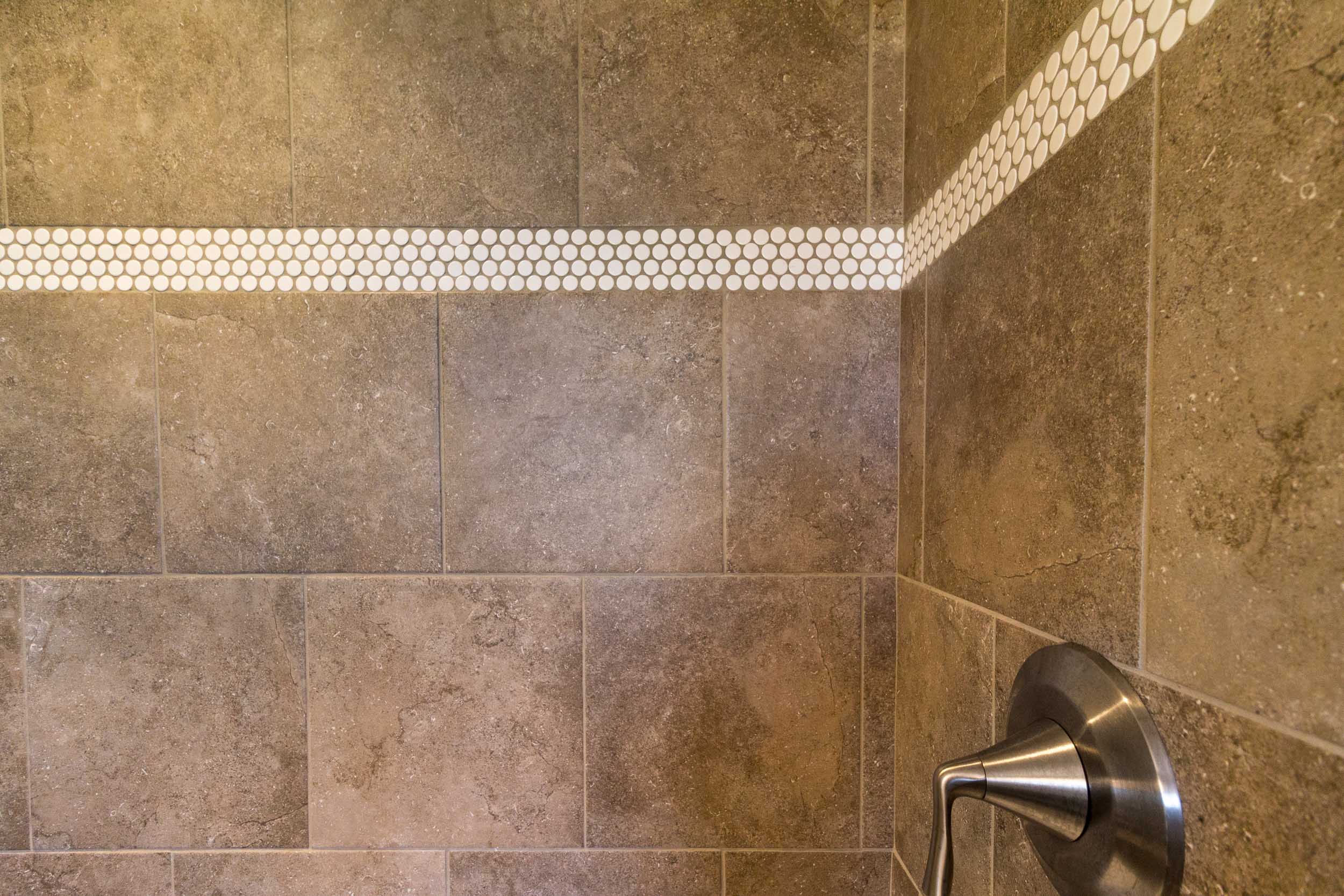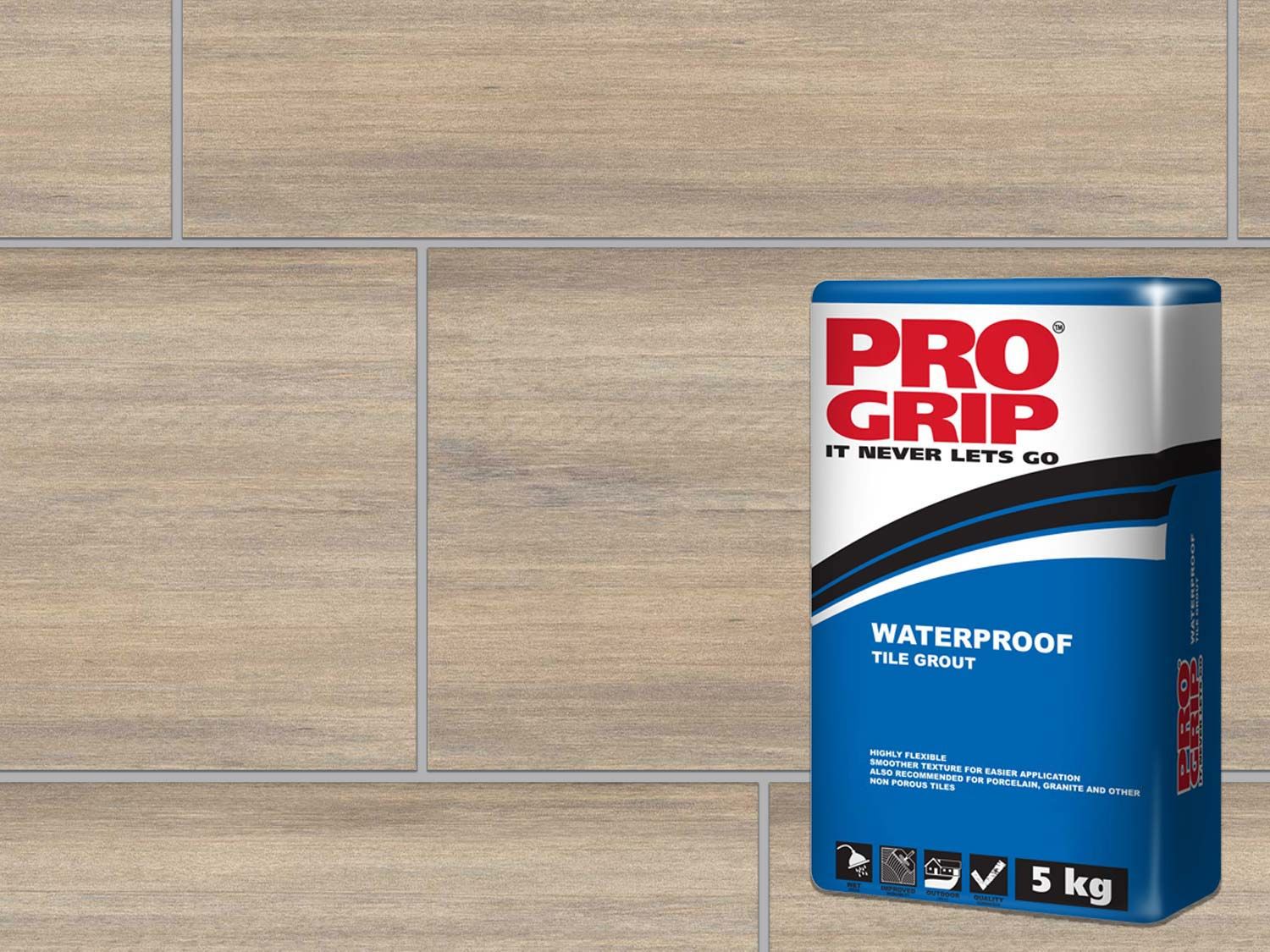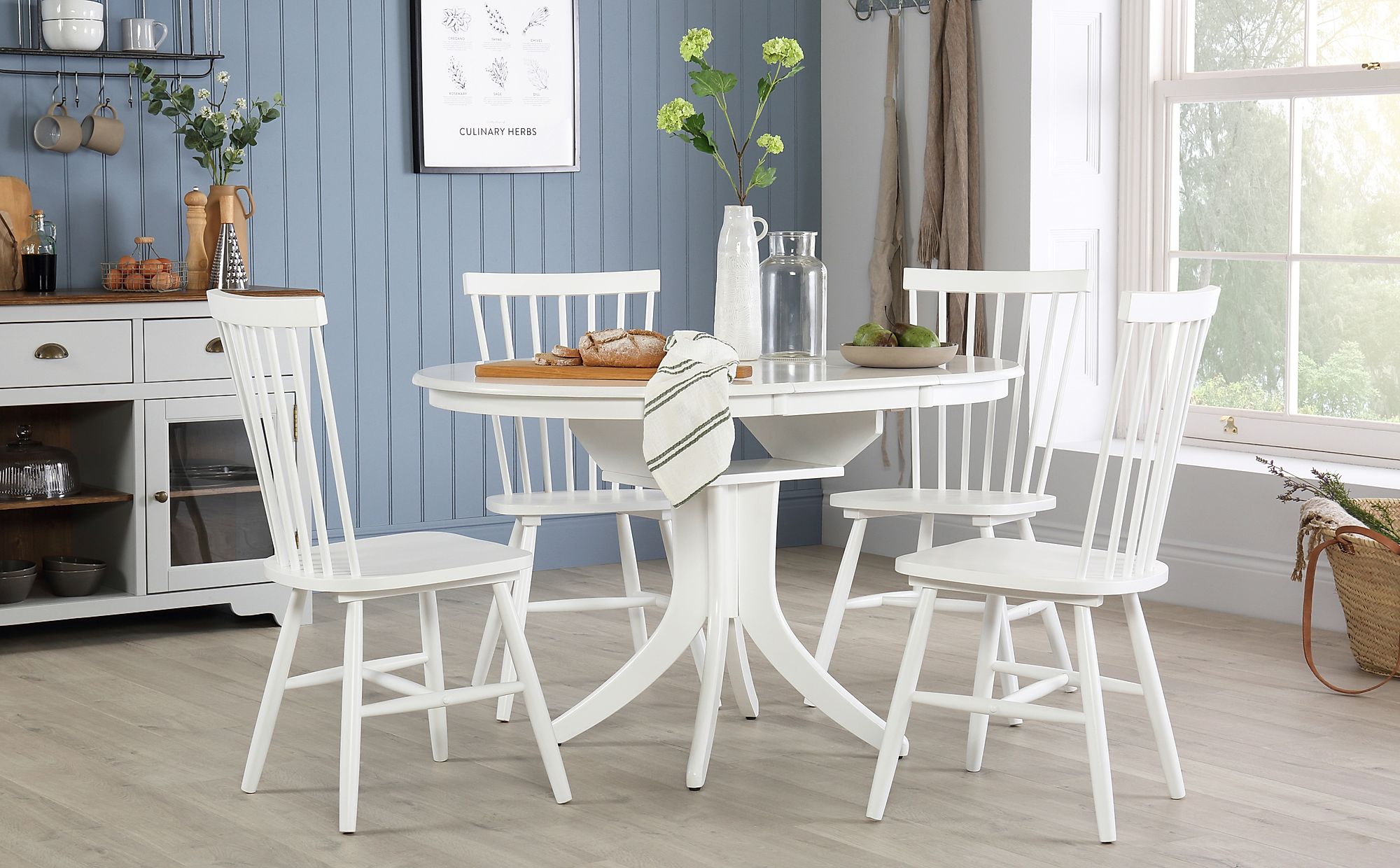If you're looking for a versatile and durable grout option for your kitchen tile wall, look no further than sanded grout. This type of grout is made up of cement, sand, and water, giving it a strong and sturdy composition that can withstand heavy foot traffic and frequent cleaning. Sanded grout is also perfect for filling in wider gaps between tiles, making it a popular choice for larger kitchen wall spaces. Sanded grout is also known for its ability to resist cracking and crumbling, making it a reliable choice for long-term use. It also comes in a variety of colors, allowing you to choose the perfect shade to complement your kitchen's design and aesthetic. So if you want a reliable and durable grout option for your kitchen tile wall, consider using sanded grout.1. Sanded Grout for Kitchen Tile Wall
If your kitchen tile wall has smaller gaps between tiles, non-sanded grout may be the perfect option for you. This type of grout is made up of cement and water, without the addition of sand, making it ideal for filling in narrower gaps. Non-sanded grout is also easier to work with and is less likely to scratch or damage delicate tiles. Non-sanded grout is also a great choice for areas that are prone to moisture, as it is less porous than sanded grout and can help prevent water from seeping in and causing damage. It is also available in a variety of colors, making it easy to find the perfect match for your kitchen tile wall.2. Non-Sanded Grout for Kitchen Tile Wall
If you want a grout that is highly resistant to stains, chemicals, and water, epoxy grout is the way to go. Made up of epoxy resins and a hardener, this type of grout is extremely durable and can withstand heavy use and exposure to harsh elements. It is also available in a wide range of colors, making it easy to find a shade that matches your kitchen's color scheme. One downside to using epoxy grout is that it can be more difficult to work with, as it dries quickly and requires specific mixing instructions. However, its durability and resistance make it a popular choice for high-traffic areas like kitchen tile walls.3. Epoxy Grout for Kitchen Tile Wall
Acrylic grout is a popular choice for those looking for a grout that is easy to work with and offers good resistance to stains and water. Made from acrylic polymer and sand, this type of grout is relatively easy to apply and can be used in both interior and exterior settings. One of the main benefits of using acrylic grout is its flexibility, which allows it to expand and contract with temperature changes without cracking or breaking. It also comes in a variety of colors, making it a versatile choice for kitchen tile walls of any style.4. Acrylic Grout for Kitchen Tile Wall
Latex grout is a popular option for its ease of use and its ability to resist stains and moisture. Made from a mixture of latex, water, and sand, this type of grout is highly flexible and can be used in both interior and exterior settings. Latex grout is also mold and mildew-resistant, making it a great choice for kitchens that are prone to moisture. It also comes in a variety of colors, making it easy to find a shade that matches your kitchen's color scheme.5. Latex Grout for Kitchen Tile Wall
For those who want a hassle-free grout option, pre-mixed grout is the way to go. This type of grout comes ready to use, eliminating the need for any mixing or preparation. It is also available in both sanded and non-sanded options, depending on the size of your tile gaps. Pre-mixed grout is a great choice for DIY projects or those looking for a quick and easy grout solution. However, it may not offer the same level of durability and resistance as other types of grout, so it may not be the best option for high-traffic areas.6. Pre-Mixed Grout for Kitchen Tile Wall
If you're working with delicate or easily damaged tiles, unsanded grout is a safe and reliable choice. Made from a mixture of cement and water, this type of grout is gentler on tiles and less likely to cause scratches or damage during application. Unsanded grout is also ideal for smaller tile gaps and is easier to work with than sanded grout. It is available in a variety of colors, making it a versatile choice for any kitchen tile wall project.7. Unsanded Grout for Kitchen Tile Wall
If you want to add a pop of color to your kitchen tile wall, consider using colored grout. This type of grout is available in a wide range of shades, allowing you to create a unique and personalized look for your kitchen. It is also available in both sanded and non-sanded options, depending on your tile gap size. Colored grout can add a fun and creative touch to your kitchen design, but it may not offer the same level of durability and resistance as other types of grout. Consider using it in low-traffic areas or as an accent to other types of grout.8. Colored Grout for Kitchen Tile Wall
For kitchens that are prone to moisture and water exposure, waterproof grout is a must-have. This type of grout is specifically designed to resist water and prevent it from seeping in and causing damage. It is also mold and mildew-resistant, making it a great choice for high-humidity areas. Waterproof grout is available in a variety of types, including sanded, non-sanded, and epoxy, so you can choose the best option for your kitchen tile wall. Just be sure to carefully follow the instructions for mixing and application to ensure maximum effectiveness.9. Waterproof Grout for Kitchen Tile Wall
If you want a grout that is easy to maintain and keeps its clean and bright appearance, consider using stain-resistant grout. This type of grout is specially formulated to resist stains and discoloration, making it ideal for high-traffic areas like kitchen tile walls. Stain-resistant grout is available in a variety of types, including sanded, non-sanded, and epoxy, so you can choose the best option for your needs. It is also available in a range of colors, allowing you to find the perfect match for your kitchen tile wall.10. Stain-Resistant Grout for Kitchen Tile Wall
What is Grout and Why is it Important for Kitchen Tile Walls?
/how-to-grout-ceramic-wall-tile-1824821-hero-b2c7e9ae8a764011ace51090a427f2e2.jpg)
The Role of Grout in Kitchen Tile Walls
 When it comes to designing a kitchen, one of the most important elements to consider is the type of grout used for the tile walls. Grout is a mixture of cement, water, and sand that is used to fill the gaps between tiles, providing a cohesive and waterproof seal. While it may seem like a small detail, the type of grout used can greatly impact the overall look and functionality of your kitchen.
When it comes to designing a kitchen, one of the most important elements to consider is the type of grout used for the tile walls. Grout is a mixture of cement, water, and sand that is used to fill the gaps between tiles, providing a cohesive and waterproof seal. While it may seem like a small detail, the type of grout used can greatly impact the overall look and functionality of your kitchen.
Choosing the Right Type of Grout
:max_bytes(150000):strip_icc()/how-to-grout-ceramic-wall-tile-1824821-07-f4f2bfe93c11494c89ad12e0d4877b52.jpg) There are various types of grout available on the market, but not all are suitable for kitchen tile walls. The two most common types of grout used for kitchens are sanded and unsanded grout. Sanded grout is recommended for larger gaps between tiles, while unsanded grout is best for smaller gaps. It's important to choose the right type of grout for your kitchen tile walls to ensure proper adhesion and durability.
Featured Keyword: type grout for kitchen tile wall
There are various types of grout available on the market, but not all are suitable for kitchen tile walls. The two most common types of grout used for kitchens are sanded and unsanded grout. Sanded grout is recommended for larger gaps between tiles, while unsanded grout is best for smaller gaps. It's important to choose the right type of grout for your kitchen tile walls to ensure proper adhesion and durability.
Featured Keyword: type grout for kitchen tile wall
Consider the Color
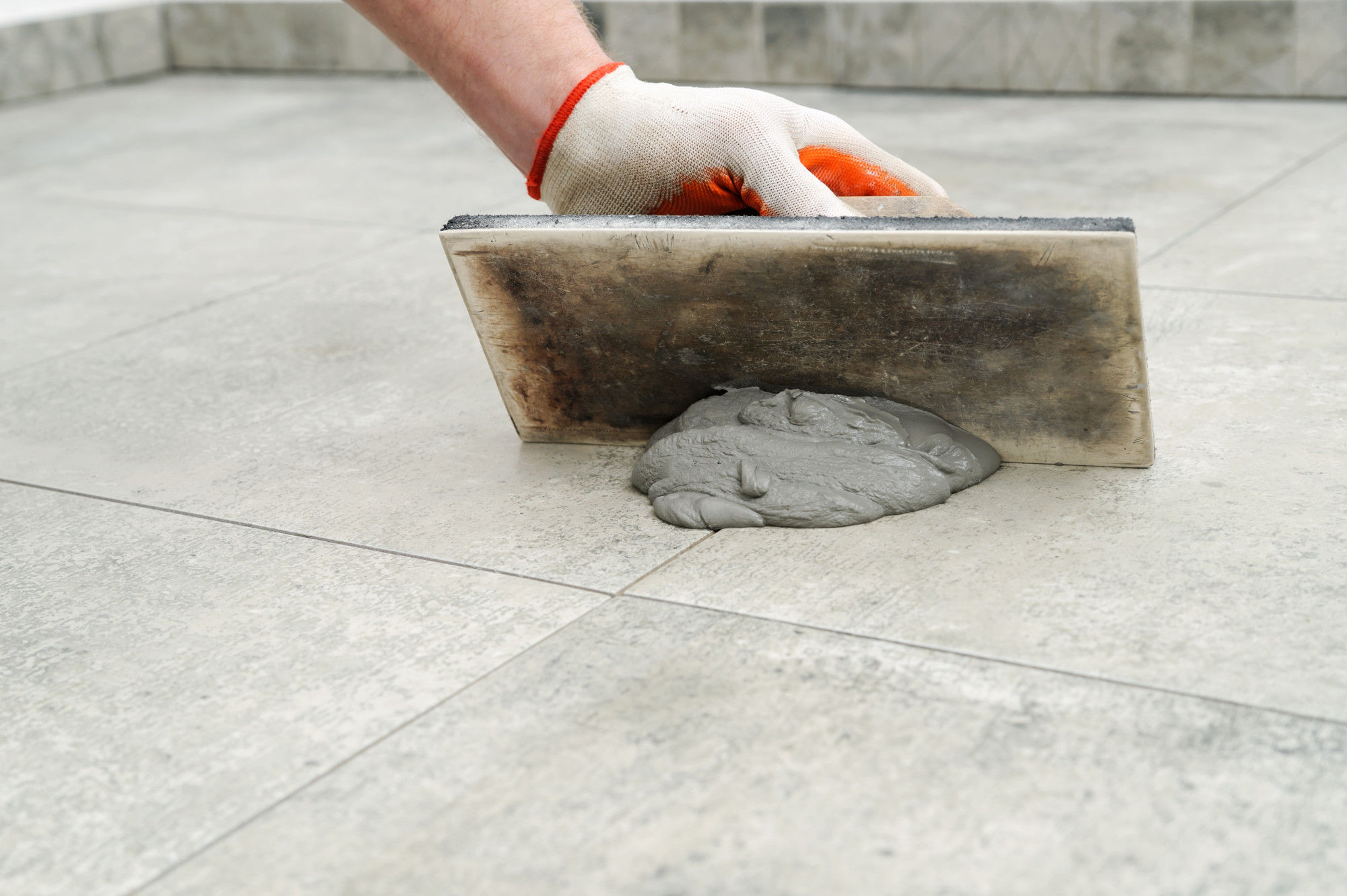 In addition to the type of grout, the color of the grout also plays a significant role in the overall aesthetic of your kitchen. While white grout may seem like the obvious choice, it can easily become discolored and stained over time. Consider using a darker grout color, such as gray or beige, to hide stains and give your kitchen a more modern look. Make sure to also consider the color of your tiles when choosing a grout color to ensure they complement each other well.
Related Main Keywords: grout for kitchen tile walls, color of grout, choosing the right grout
In addition to the type of grout, the color of the grout also plays a significant role in the overall aesthetic of your kitchen. While white grout may seem like the obvious choice, it can easily become discolored and stained over time. Consider using a darker grout color, such as gray or beige, to hide stains and give your kitchen a more modern look. Make sure to also consider the color of your tiles when choosing a grout color to ensure they complement each other well.
Related Main Keywords: grout for kitchen tile walls, color of grout, choosing the right grout
Proper Installation is Key
 No matter what type or color of grout you choose, proper installation is crucial for a long-lasting and visually appealing kitchen tile wall. It's important to thoroughly clean the tiles and grout lines before applying the grout, and to use the correct tools and techniques to ensure even and consistent application. It's also recommended to seal the grout after it has fully cured to protect against water damage and staining.
No matter what type or color of grout you choose, proper installation is crucial for a long-lasting and visually appealing kitchen tile wall. It's important to thoroughly clean the tiles and grout lines before applying the grout, and to use the correct tools and techniques to ensure even and consistent application. It's also recommended to seal the grout after it has fully cured to protect against water damage and staining.
Final Thoughts
 When it comes to designing a kitchen, the type of grout used for the tile walls should not be overlooked. It not only serves a functional purpose but can also greatly enhance the overall look and feel of your kitchen. By considering the type, color, and installation of grout, you can achieve a beautiful and durable kitchen tile wall that will withstand the test of time.
Related Main Keywords: designing a kitchen, waterproof seal, enhancing the look and feel, durable kitchen tile wall
When it comes to designing a kitchen, the type of grout used for the tile walls should not be overlooked. It not only serves a functional purpose but can also greatly enhance the overall look and feel of your kitchen. By considering the type, color, and installation of grout, you can achieve a beautiful and durable kitchen tile wall that will withstand the test of time.
Related Main Keywords: designing a kitchen, waterproof seal, enhancing the look and feel, durable kitchen tile wall



:max_bytes(150000):strip_icc()/Sanded-vs-unsanded-tile-grout-1822584_color-ac2bb41141024ead823b7047fee86375.jpg)
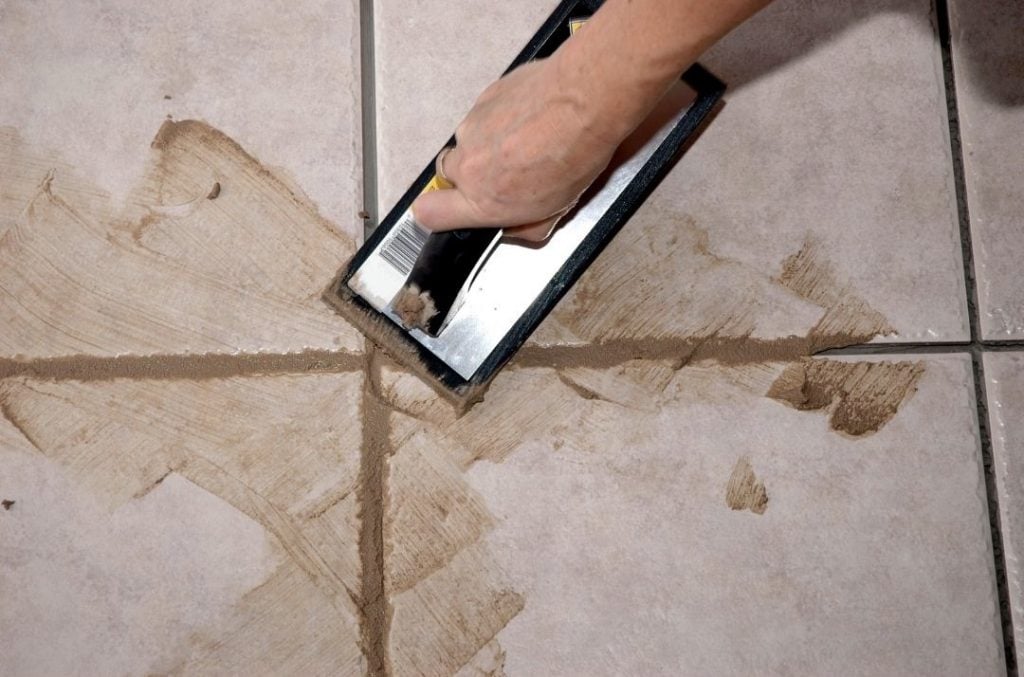


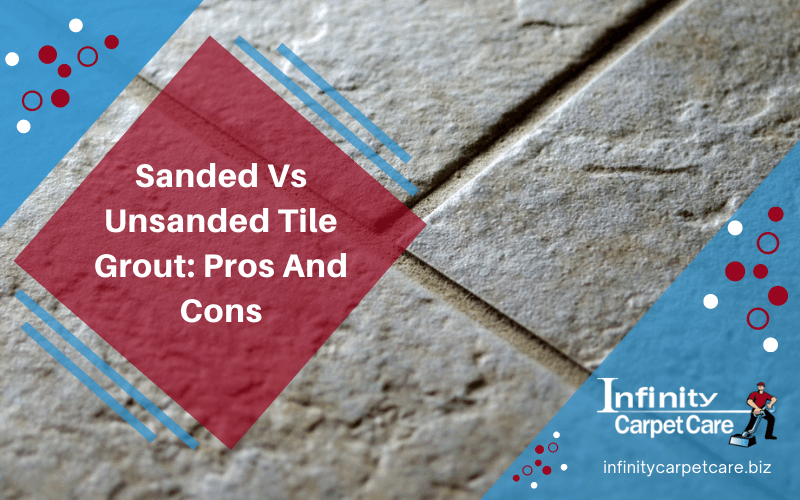






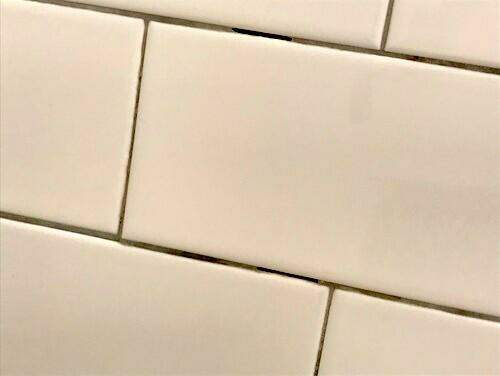
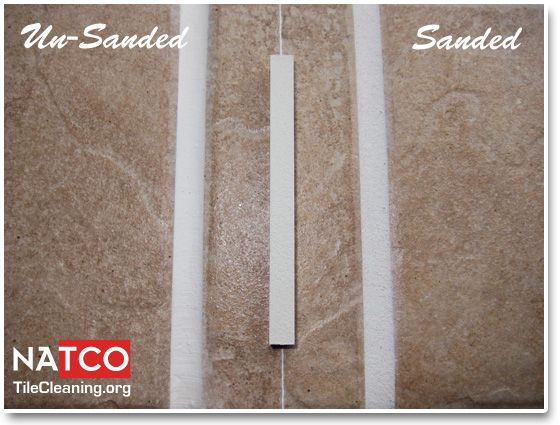









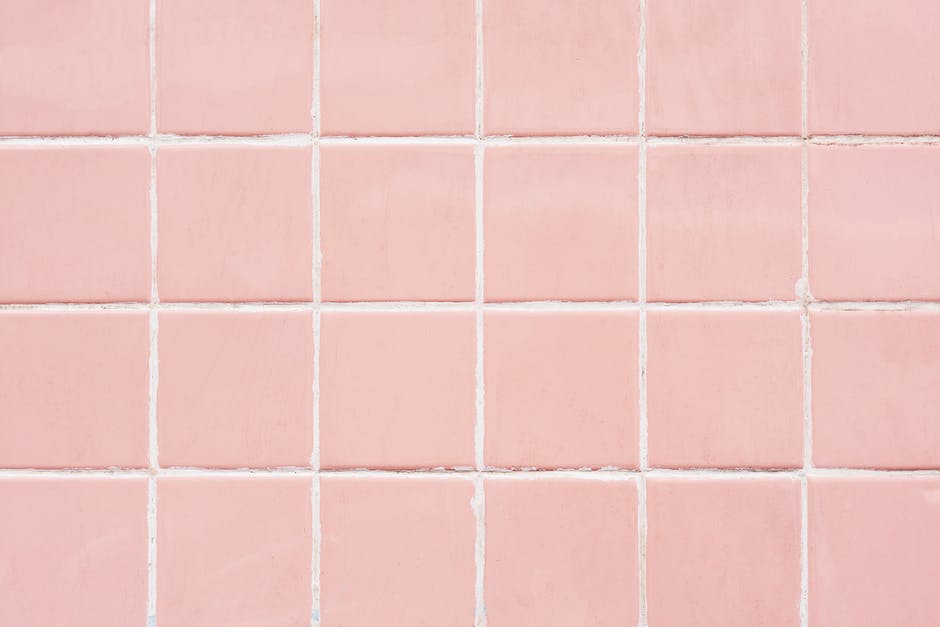







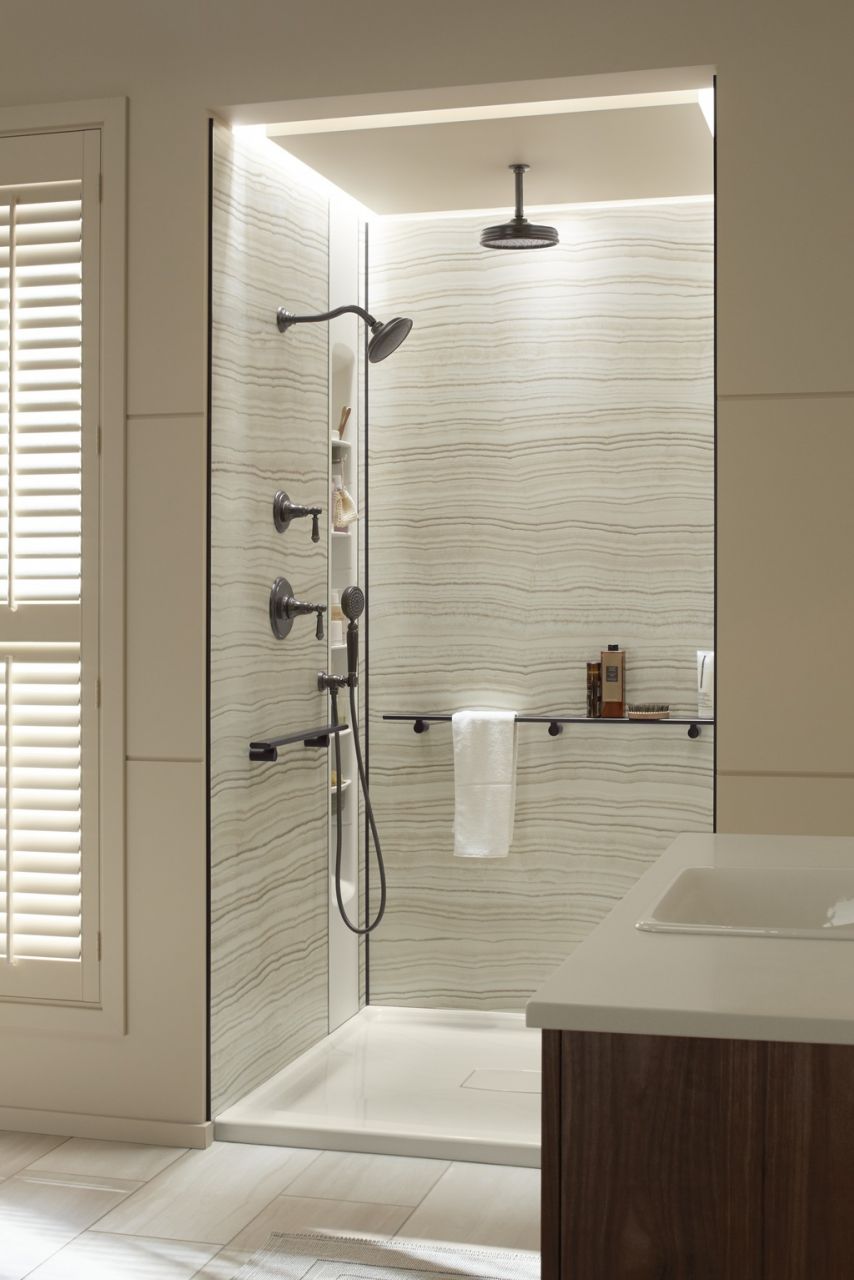
:max_bytes(150000):strip_icc()/how-to-grout-ceramic-wall-tile-1824821-07-f4f2bfe93c11494c89ad12e0d4877b52.jpg)
:max_bytes(150000):strip_icc()/how-to-grout-ceramic-wall-tile-1824821-04-efc9e71308b145b0938886ec6bfe510b.jpg)




:max_bytes(150000):strip_icc()/How_to_Regrout_Ceramic_Tile_64434_08-63a0298cea2a47ba985a0a17ed65d278.jpg)
